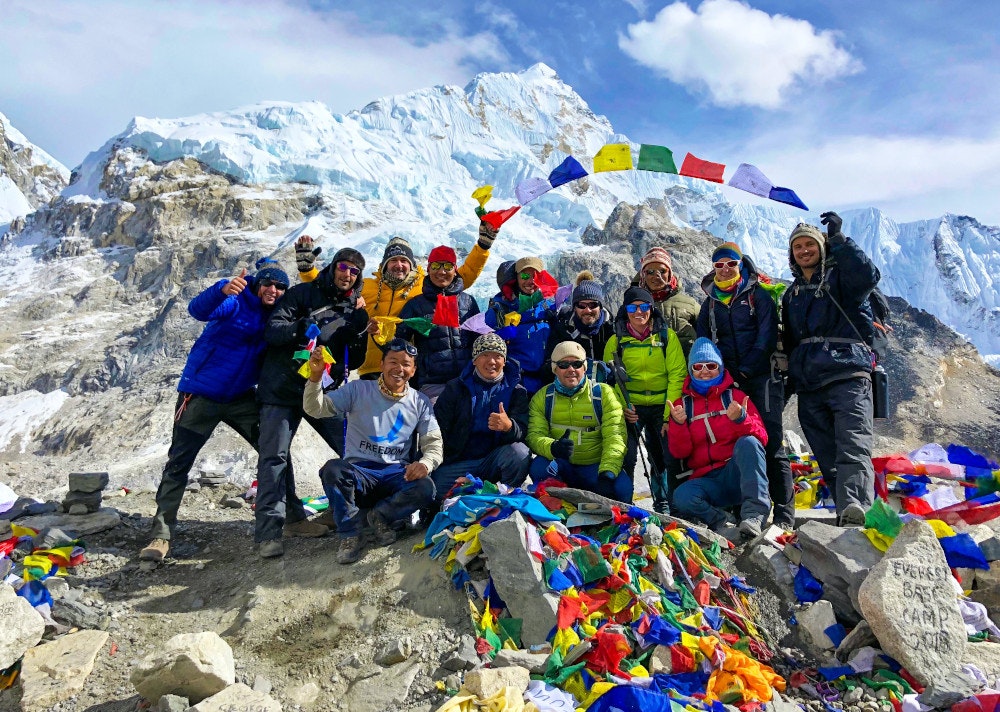How to Train for High-Altitude Hiking: Prepare for the Thin Air

Understanding Altitude: What You're Up Against
Shortness of breath
Fatigue
Headaches
Nausea
Dizziness

How to Train for Altitude Hiking
1. Cardiovascular Fitness
Hiking (of course!): try short hikes around your home and gradually increase elevation.
Running
Cycling
Swimming

2. Strength Training
Squats and lunges for leg strength
Step-ups to mimic climbing stairs
Planks and Russian twists for core stability
Calf raises for those steep inclines

3. Simulate Altitude
Elevation mask: These masks restrict airflow, simulating the decreased oxygen availability at altitude. Use them during some of your cardio workouts, but not all - you still need to train at full capacity, too.
Hypoxic training: Some gyms offer altitude rooms or tents that simulate high altitude conditions. If you can access these, try incorporating one or two sessions a week into your training.
Sleep in a tent: For the dedicated, altitude tents for sleeping can help your body acclimatise. Just prepare for some odd looks from your family!

4. Hiking with a Pack
Gradually increase the length of your hikes: Start with shorter hikes and slowly work your way up. For example, if you're comfortable with 5-mile hikes, try increasing by a mile each week. Pay attention to how your body responds and adjust accordingly. Remember, it's not just about distance - factor in elevation gain, too.
Adding weight to your pack during training hikes: You can start with about 10% of your body weight and increase gradually. Fill your bag with water bottles - you can always pour them out if it gets too heavy, and it mimics how your pack will feel lighter as you consume food and water on an actual trek.
Incorporating back-to-back hiking days to simulate a multi-day trek: This is crucial for preparing your body for the cumulative fatigue of a long trek.
Practice different terrains: If your high-altitude trek will involve scrambling over rocks or crossing streams, try to find similar terrains for your training hikes. This builds specific muscle strength and improves your balance and agility.


5. Nutrition and Hydration
Practice eating and drinking while hiking. It sounds simple, but it's a skill. Learn to snack without stopping and to drink from your water bottle one-handed.
Experiment with different hiking snacks and meals, and get used to drinking more water than you think you need.
Learn to recognise early signs of dehydration: These can include dark urine, headaches, and feeling unusually tired. Responding quickly to these signs can prevent more serious issues on the trail.
Consider electrolyte supplements: As you sweat, you lose essential minerals. Experiment with electrolyte tablets or powders during training to find what works best for you.
Increase your carb intake: Your body relies more on carbohydrates for energy at high altitudes. During your training, gradually shift your diet to include more complex carbohydrates like whole grains, fruits, and vegetables.
Practice your high-altitude diet: In the weeks leading up to your trek, try to eat meals similar to what you'll have on the mountain. This helps your digestive system adjust and identifies potential issues before you're on the trail.

6. Mental Preparation
Practising mindfulness or meditation to stay calm under stress: This can be as simple as taking five minutes each day to focus on your breath. Apps like Headspace or Calm can be great tools to get started.
Visualising yourself successfully completing your trek. Spend time imagining the triumphant moment at the summit and how you'll handle challenges along the way. This mental rehearsal can grow your confidence and resilience.
Developing a mantra or positive self-talk strategy: Have a phrase or thought ready for when things get difficult. It could be as simple as "One step at a time" or "I am strong, I am capable."

7. Acclimatisation
If you intend to trek Everest Base Camp (5,364m), consider a trip to a ski resort at 2,500-3,000m a few weeks before.
For a Kilimanjaro climb (5,895m), you might visit the Alps and hike around 3,000-4,000m.

Spend 1-2 days taking it easy. Light walks are fine, but avoid strenuous activity.
Stay hydrated. Aim for clear, copious urine - a good indicator of hydration.
Avoid alcohol and tobacco, which can interfere with acclimatisation.
Be aware of early signs of altitude sickness: headache, dizziness, loss of appetite, nausea. Don't ignore these symptoms.

The old adage "pole pole" (slowly, slowly in Kiswahili) is key at altitude. A slow, steady pace allows your body to adjust and conserve energy. So, resist the urge to "race" up the mountain, even if you feel good.
Discuss medications like Diamox (Acetazolamide) with your doctor, which can help prevent altitude sickness. Remember, these are preventative, not a cure. They don't replace proper acclimatisation.
Everyone acclimatises differently. What works for your trekking partner might not work for you. Don't be afraid to speak up if you're not feeling well, and there's no shame in taking an extra acclimatisation day if you need it.
Choose a trek itinerary that includes rest days or contingency days for acclimatisation. Be prepared to adjust your plans if needed -sometimes, an extra day at a lower altitude can make all the difference.

Conclusion
Find your next adventure
Why Skyhook?
Join over 27,000 Skyhook adventurers who've used our platform to book directly with our vetted local guides, at local prices (we never markup).
Expert Local Guides
Experienced local guides, handpicked by us.
Best Prices
Never pay a markup on the local guide's price.
Exclusive Club
Earn loyalty rewards every time you travel.
Great Social Vibes
Small group tours provide a richer experience.
Stellar Feedback
Over 3,000 reviews, average of 4.9/5 stars.









